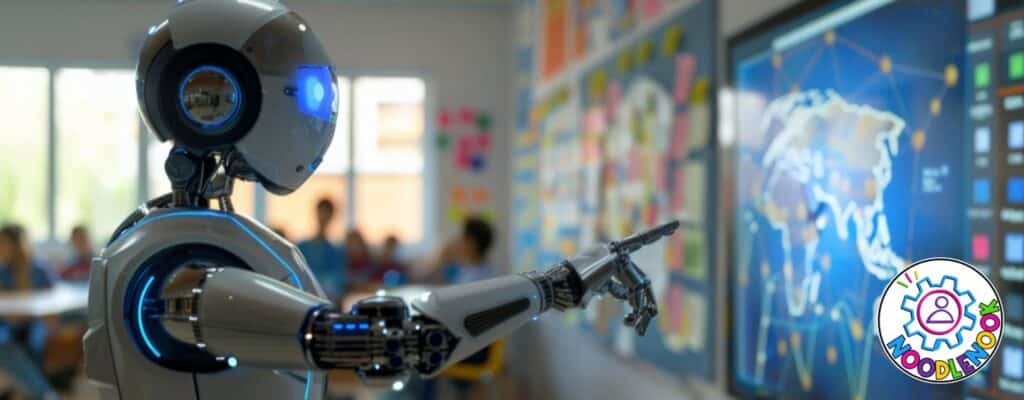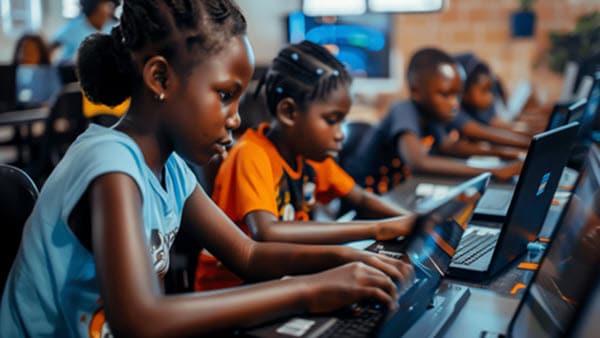As we stand at the intersection of artificial intelligence and education, there’s an urgent need to reimagine how we prepare students for a world driven by innovation, creativity, and constant change. The PEACE Framework offers educators a structured approach to implement AI-powered inquiry-based learning that builds essential 21st-century skills.
Why We Need a New Approach to Education
At 30,000 feet, we invest in education because it’s how we shape the future. Not just the future of individuals, but our communities, our economy, our democracy, and our humanity. Education is the engine that powers all of it… It powers innovation, equity, and connection.
And yet, we’re still designing it for a world that doesn’t exist anymore.
We face a fundamental challenge: we have 21st-century technology and research about how learning actually works, but we’re implementing it in a 19th-century framework. Our students need creativity, critical thinking, and technological fluency, yet we’re often still measuring success through standardized tests and rote memorization.
When AI can instantly answer factual questions, why are we still focused on content delivery rather than teaching students how to navigate information, collaborate effectively, and solve complex problems?
Introducing the PEACE Framework
The PEACE Framework is a step-by-step process that helps teachers bring authentic inquiry-based learning into the classroom… using AI as a tool to support thinking, not replace it. It’s designed with real classrooms in mind: practical, flexible, and powerful enough to transform how students learn.
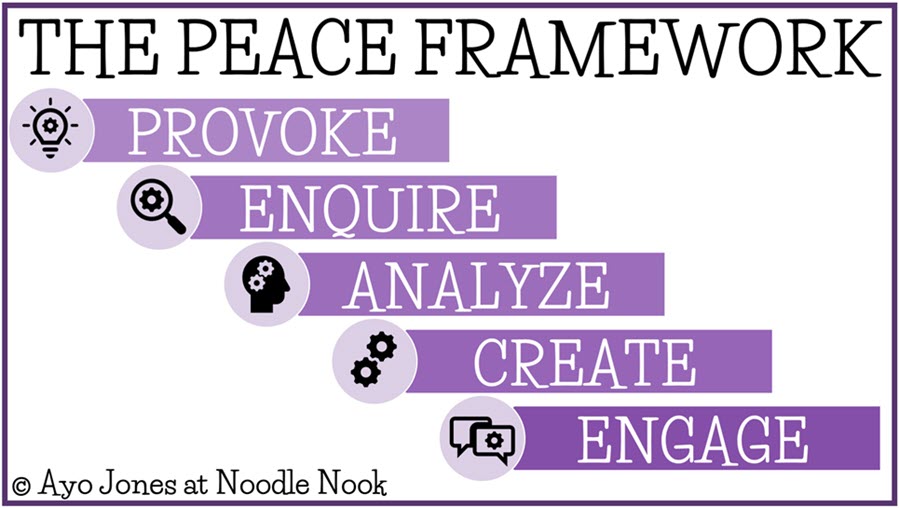
P – Provoke
Start with curiosity. Use an image, quote, or scenario that gets students thinking. This opens the door to deeper exploration.
Classroom Example: I recently worked with a middle school teacher who displayed an AI-generated image of a futuristic underwater city. Students immediately began wondering about sustainable habitats, ocean conservation, and the future of urban planning… all before the formal lesson had even begun. The provocation sparked genuine curiosity that carried through the entire unit.
E – Enquire
Guide students to ask better questions. Help them get specific, refine their thinking, and build questions that lead to strong investigations.
Classroom Example: Instead of asking “How will AI change jobs?”, students learn to refine their questions: “What specific healthcare roles might be augmented rather than replaced by AI in the next decade, and what new skills will professionals need?” These precisely formulated questions lead to deeper learning and more meaningful research.
A – Analyze
This critical phase teaches students to evaluate AI-generated results with a discerning eye. Students learn to assess whether the information aligns with their question intent, identify potential biases in the responses, and verify factual accuracy through multiple sources.
Classroom Example: When high school students researched historical perspectives on civil rights movements, they didn’t simply accept the first AI-generated summary they received. They learned to identify when certain voices were overrepresented or missing, check claims against reliable sources, and recognize when the AI might be presenting a simplified or biased view. This crucial digital literacy skill—evaluating information rather than simply consuming it… prepares students for a world where information abundance requires careful filtering.
C – Create
Now they take what they’ve learned and build something with it. That could be a solution, a story, a presentation… whatever fits the task.
Classroom Example: After researching climate change impacts on local ecosystems, a group of elementary students created a multimedia presentation combining AI-generated visualizations with their own narration and proposed solutions. The technology amplified their creativity rather than replacing it.
E – Engage
Students share their work, reflect on what they’ve learned, and connect with an audience. It’s about making their thinking visible and meaningful.
Classroom Example: I watched a classroom of students who had used the PEACE Framework present their findings on community health disparities to local officials. They weren’t just regurgitating facts… they were confidently discussing complex issues, responding to questions, and proposing realistic solutions. This is what learning looks like when it matters.
How PEACE Transforms Classrooms
The PEACE Framework isn’t just another educational acronym—it’s a fundamental shift in how we approach teaching and learning in the Intelligence Age. Here’s what makes it different:
✅Structure Without Sacrificing Creativity
Teachers get a clear, repeatable roadmap to follow. Each step builds on the last, so students stay focused and engaged. The framework provides guidance without restricting the creative exploration that makes learning meaningful.
✅Seamless Integration of AI and Inquiry
PEACE is designed with modern classrooms in mind—especially those exploring AI. It gives students the tools to ask strong questions and use AI to research, analyze, and create, while ensuring human thinking remains central to the learning process.
✅Focus on Future-Ready Skills
Every phase intentionally builds core skills: critical thinking, digital literacy, research, problem-solving, and communication. These are the capabilities that will matter most in a world where information is abundant but wisdom is scarce.
✅Grounded in Classroom Reality
This isn’t theory. It’s made for real teachers, with real time constraints, working with students who have different needs and learning levels. It’s flexible, practical, and works even if your school isn’t fully on board with AI yet.
From My Classroom to Yours
One of my favorite entry points for AI in the classroom is reverse image engineering. It’s super simple and honestly kind of fun. I’ll pop an AI-generated image up on the board—something odd or interesting—and ask students to figure out the prompt that could’ve created it.
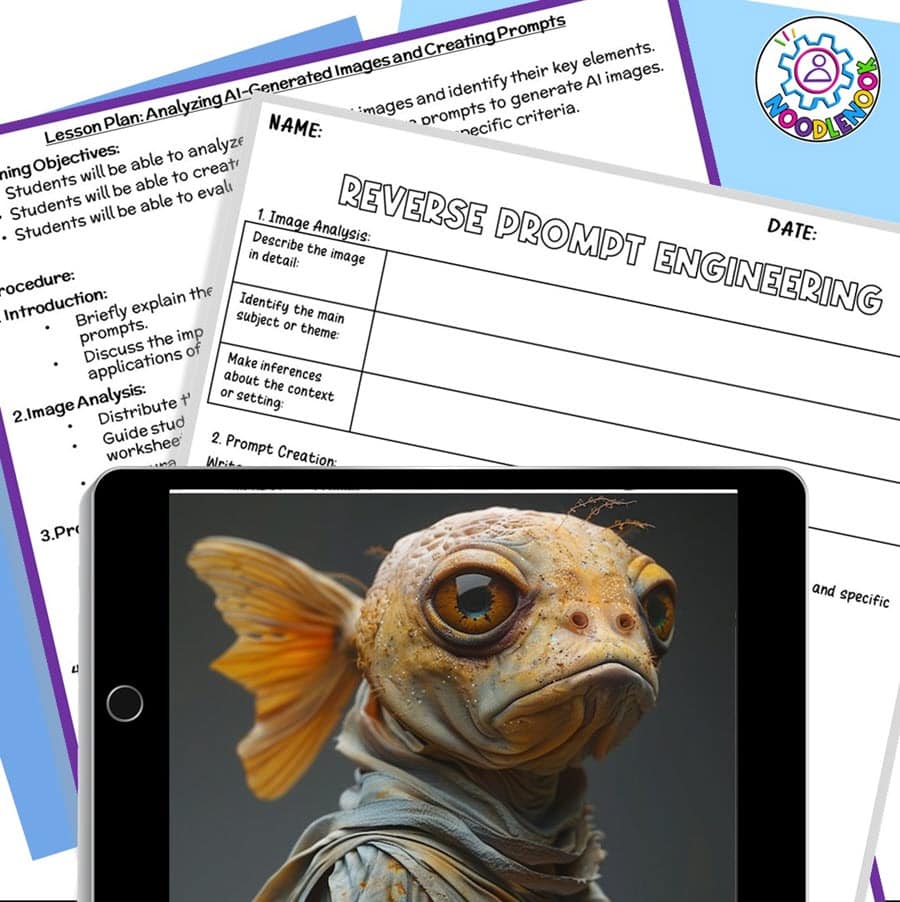
It seems like a creative exercise, but what it really builds is attention to detail, vocabulary, sentence structure… all those foundational language skills. And the best part? They don’t even realize they’re doing serious thinking. It taps into future-ready skills without needing fancy tech or a complete curriculum overhaul. Just an image, some good questions, and curiosity.
Forward Ever, Backward Never
My father used to say, “Forward ever, backward never”—a quote from Kwame Nkrumah that has guided both my personal and professional journey. It reminds me not to get stuck looking back, but to stay focused on what’s ahead.

That mindset shows up in my work with the PEACE Framework. The world is moving forward whether we like it or not, and our job is to help students build the skills they need to keep up. Things like curiosity, flexibility, communication, and the confidence to use tools like AI to solve real problems.
We can’t prepare kids for yesterday’s world. We’ve got to teach for the one they’re walking into.
Join the Conversation
Education isn’t about teaching facts. It’s about teaching how to think, how to question, and how to create. With tools like AI, teachers can now be the architects of a new kind of future—one where technology amplifies human potential rather than diminishing it.
I invite you to explore how the PEACE Framework might transform learning in your context. Whether you’re a classroom teacher, an administrator, or a policymaker, there’s a place for you in this conversation about the future of education.
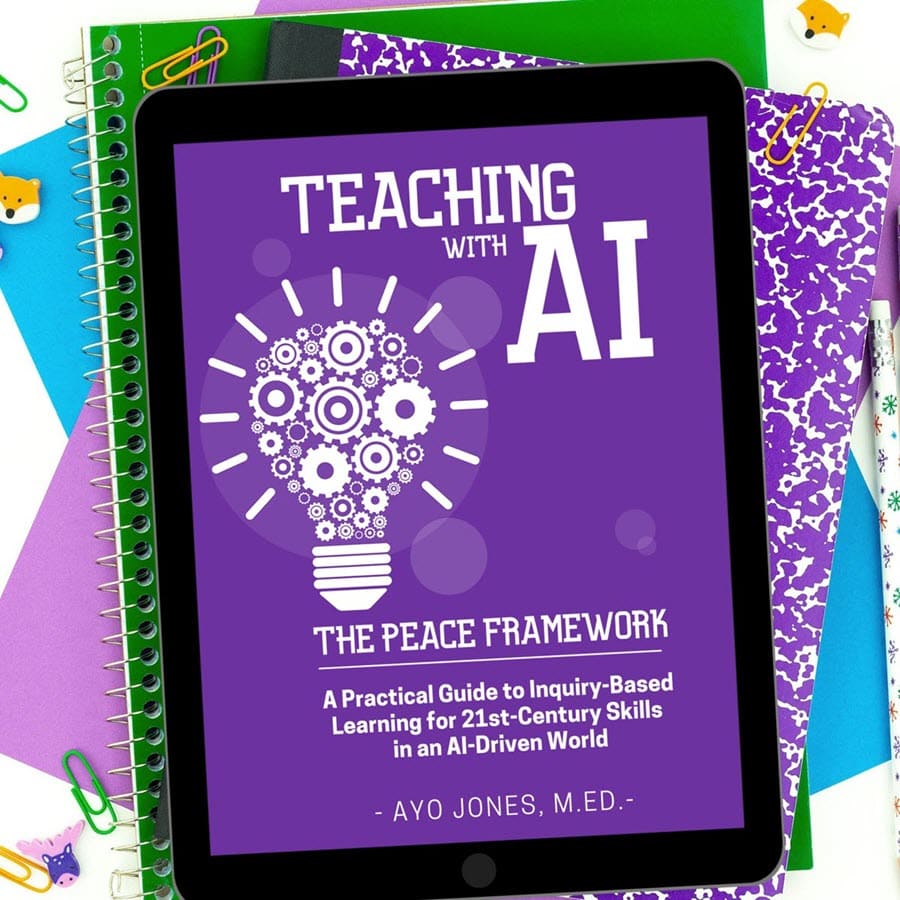
Learn more about the PEACE Framework in my book “Teaching with AI: The PEACE Framework” and join me at the GaETC Conference this November, where I’ll be delivering the keynote address on reimagining education for the Intelligence Age.
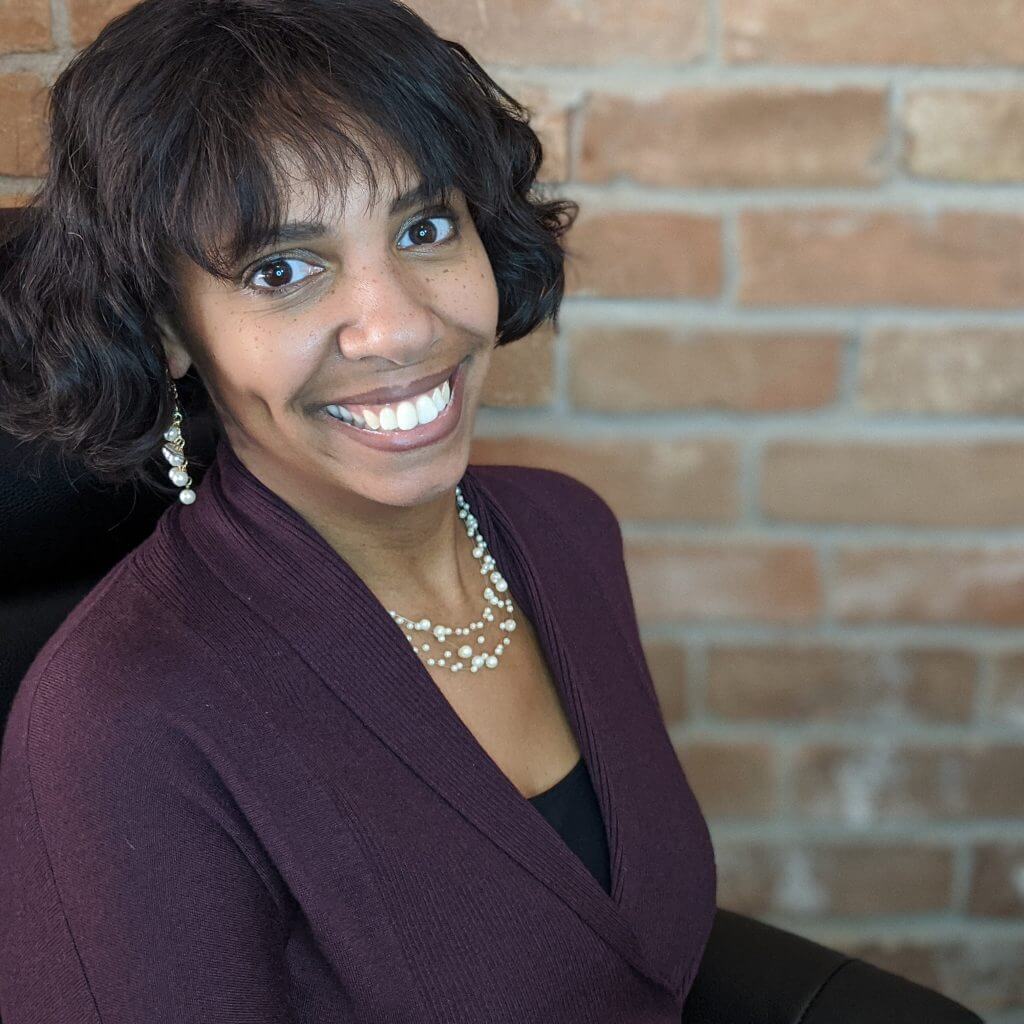
About the Author: Ayo Jones is a former classroom teacher turned instructional designer and national speaker, featured at TCEA and GaETC. She helps educators ditch outdated methods and reimagine what’s possible with inquiry, AI, and inclusive practices that actually work.

